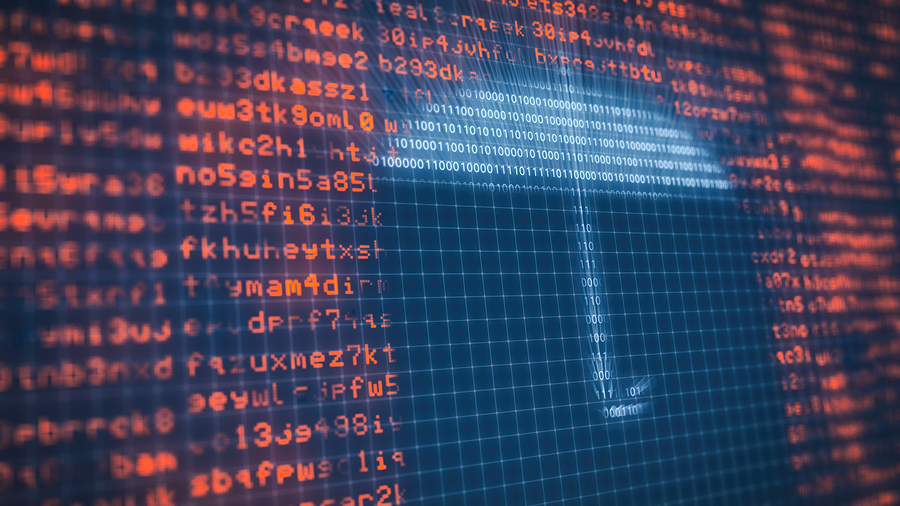Data Destruction Solutions: A Key Element in Your Cyber Security Approach
Data Destruction Solutions: A Key Element in Your Cyber Security Approach
Blog Article
The Important Nature of Data Devastation in Upholding Computer System Security Solutions and Protecting Versus Unauthorized Gain Access To
In an era where information violations and identity burglary are progressively common, the significance of reliable information damage can not be overstated. Different approaches, from data wiping to physical devastation, serve as critical safeguards against unapproved accessibility.
Significance of Information Destruction
In a progressively electronic world, the value of data damage can not be overemphasized. As companies generate vast quantities of sensitive information, the prospective effects of stopping working to appropriately handle and dispose of that information come to be progressively serious. Information violations, identification burglary, and company reconnaissance pose significant dangers, emphasizing the need of reliable data destruction practices.

Additionally, as innovation develops, so also do the methods by which harmful actors seek to manipulate sensitive info. Organizations has to stay vigilant and positive in their information devastation strategies to secure versus these developing dangers. By focusing on data damage, business not just protect their possessions yet additionally foster count on among customers and stakeholders, showing a dedication to responsible data administration and security practices.
Techniques of Effective Information Devastation
To make certain the complete and irreversible devastation of delicate data, organizations can utilize a selection of effective methods customized to their particular needs. One of the most common methods is data wiping, which involves using specialized software to overwrite existing data several times, making healing basically difficult. This is specifically beneficial for hard disks and solid-state drives, where standard removal techniques are inadequate.
One more effective approach is degaussing, which utilizes solid electromagnetic fields to interrupt the magnetic domains on storage media, providing the information irretrievable. This technique is especially suited for magnetic storage tools, such as tape drives and hard disks.
Physical destruction is additionally a sensible alternative, including the shredding, crushing, or incineration of storage space gadgets. This method guarantees that information can not be recuperated, making it optimal for organizations dealing with extremely sensitive information.

Compliance With Information Protection Regulations
Organizations need to not just focus on effective data devastation methods however additionally make sure conformity with information protection laws that regulate just how delicate details is dealt with and disposed of. Sticking to these laws is crucial for guarding personal data and preserving consumer trust fund. Regulations such as the General Data Protection Guideline (GDPR) in the European Union and the Wellness Insurance Portability and Responsibility Home Page Act (HIPAA) in the United States impose rigorous guidelines on information administration, that include demands for the safe disposal of delicate information.
To achieve conformity, organizations need to implement comprehensive data damage policies that align with these lawful structures. This includes identifying information that calls for devastation, establishing protocols for safe methodsâEUR" such as shredding physical media or using software application that fulfills industry requirements for information wipingâEUR" and maintaining comprehensive documents of devastation activities. Routine audits should be performed to make sure adherence to these policies and to recognize any kind of possible locations for renovation.
Failing to follow data defense policies can cause considerable legal ramifications, including hefty penalties and damage to an organization's reputation. Consequently, incorporating conformity into information destruction practices is not only a lawful responsibility but also a crucial part of a durable information protection technique.
Consequences of Poor Data Handling
Poor information handling can result in serious effects that expand past prompt operational problems. Organizations might face substantial economic losses due to data violations, which commonly cause expensive removal initiatives, legal fees, and regulatory penalties. These financial ramifications can hinder and stress sources development, eventually influencing a company's profits.
Moreover, bad data handling can seriously harm an organization's credibility. Stakeholders, companions, and consumers might shed rely on an entity that stops working to shield delicate information, resulting in lowered client loyalty and possible loss of company possibilities. This erosion of depend on can take years to reconstruct, if it moved here can be recovered at all.
Additionally, organizations can encounter lawful implications developing from non-compliance with data protection regulations. Such violations might lead to investigations and penalties, intensifying the monetary problem and additional tainting the organization's photo.
In the realm of cybersecurity, insufficient data monitoring methods can create susceptabilities that make systems a lot more prone to unauthorized accessibility and cyberattacks. Eventually, these consequences emphasize the essential value of carrying out robust information dealing with treatments to protect delicate info and maintain organizational integrity.
Finest Practices for Secure Data Disposal


To start with, data should be classified according to its sensitivity. Sensitive information needs extra rigorous disposal methods, such as shredding physical papers and making use of innovative software for digital data wiping. Utilizing licensed information destruction solutions ensures compliance with market guidelines and requirements.
Second of all, companies need to apply an information disposal plan that mandates normal audits. This plan needs to lay out the treatments for information retention and destruction, guaranteeing that outdated data is thrown away without delay and firmly. Educating workers on these procedures is vital to promoting a culture of safety understanding.
Finally, maintaining detailed documents of disposed information improves accountability and provides a clear audit route. This documents needs to include the type of information damaged, the technique utilized, and the date of disposal.
Verdict
Embracing robust methods such as information cleaning, degaussing, and physical destruction, alongside compliance with laws like GDPR and HIPAA, is essential for safeguarding delicate information. Disregarding proper data disposal techniques can lead to extreme repercussions, consisting of data breaches and lawful consequences.
In an era where data violations and identification theft are significantly common, the value of effective information destruction can not be overstated. data destruction. Information breaches, identity burglary, and company espionage present significant hazards, emphasizing the need of efficient data devastation methods
Conformity with policies such as GDPR More about the author and HIPAA mandates that organizations carry out rigorous information defense measures, including the secure destruction of data at the end of its lifecycle.
By prioritizing data destruction, companies not only protect their assets but likewise foster depend on amongst stakeholders and customers, showing a commitment to accountable data management and safety methods.
Organizations should not only focus on effective information devastation approaches however likewise guarantee conformity with data protection regulations that control just how delicate info is dealt with and disposed of.
Report this page